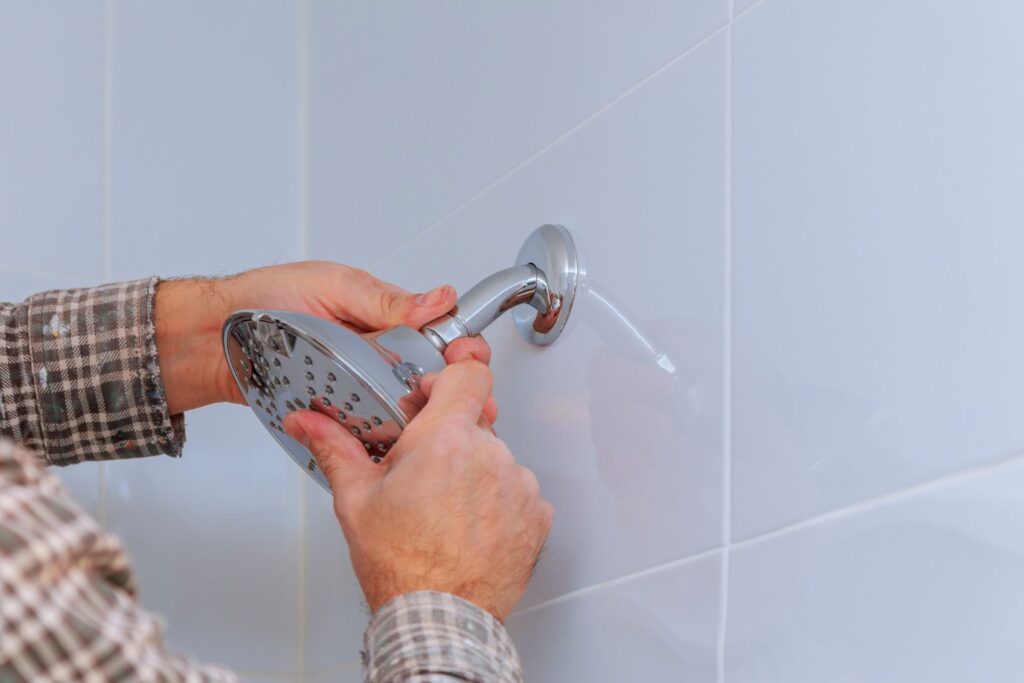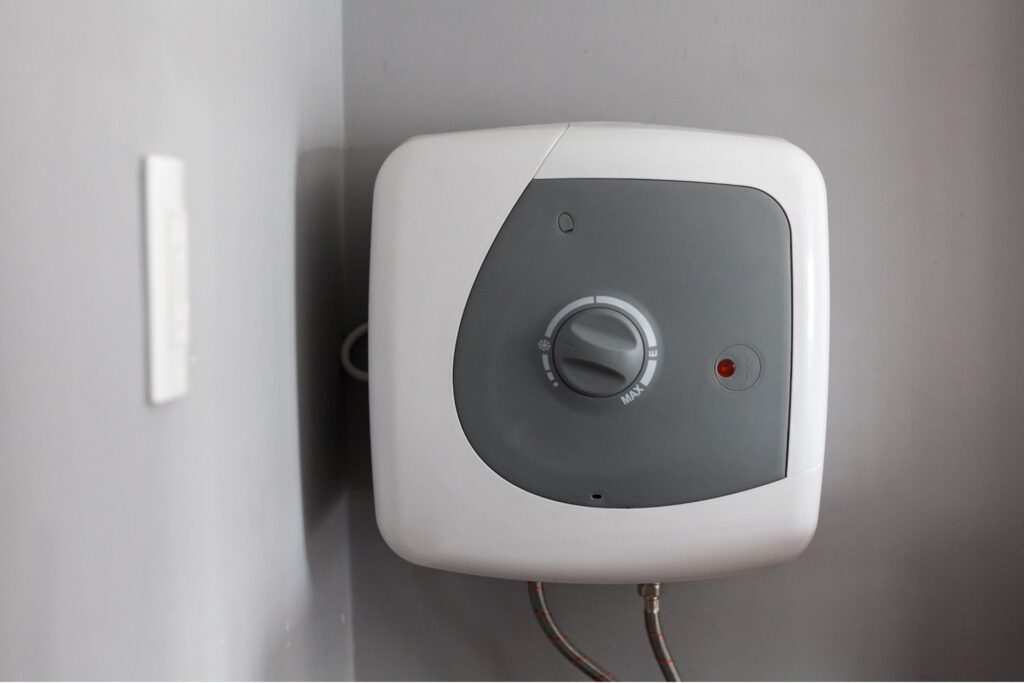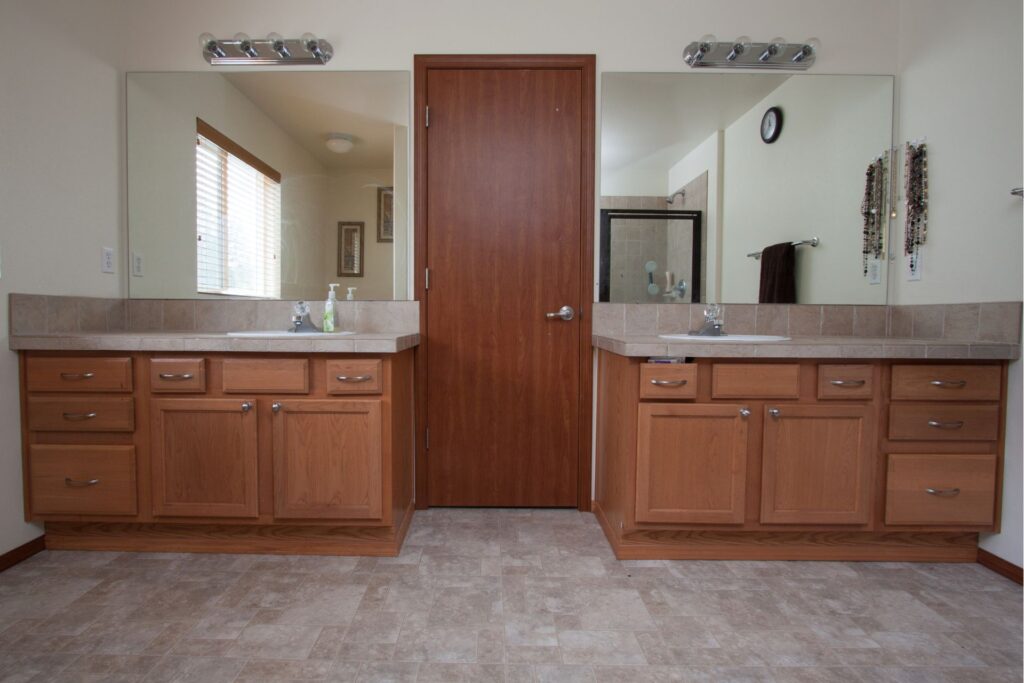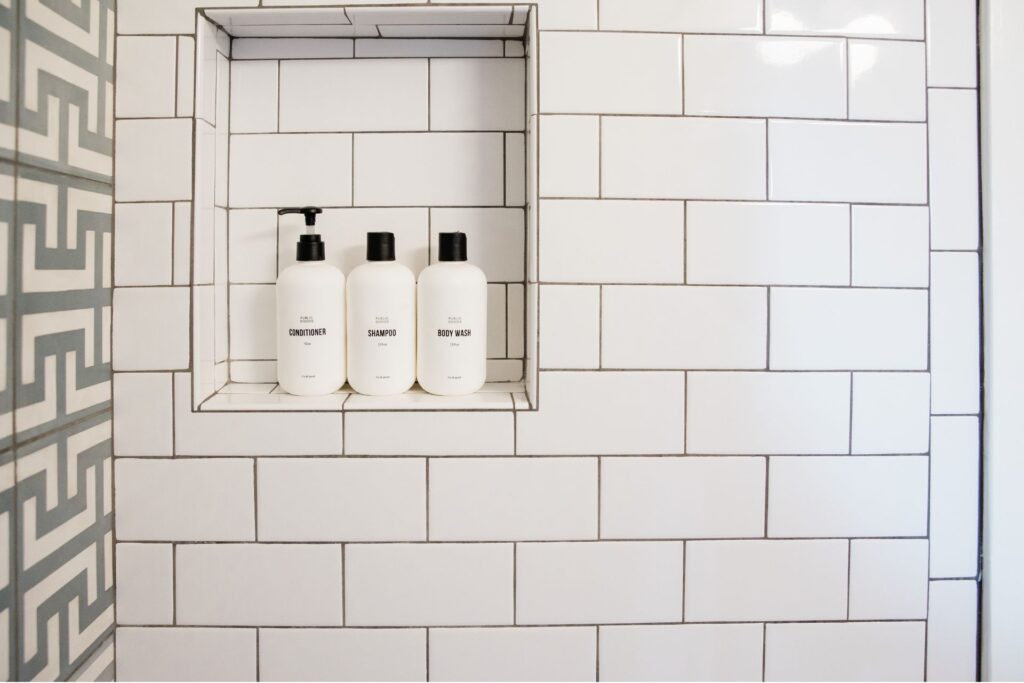Welcome to our guide on the cost to replace bathroom flooring in New Zealand. Whether you’re sprucing up your bathroom for a fresh new look or tackling necessary repairs, knowing what to expect in terms of cost is essential. In this post, we’ll explore everything you need to consider, from the types of materials available and labor expenses to potential hidden costs like subfloor repairs and waterproofing. Our goal is to help you make informed decisions, plan your budget wisely, and ensure your bathroom renovation is smooth and stress-free. Let’s dive in and break down the factors that influence the overall cost of replacing bathroom flooring in NZ.
On average, the cost to replace bathroom flooring in New Zealand ranges from $150 to $300 per square meter, depending on the materials chosen and labor involved. This estimate includes popular options like tiles or vinyl and professional installation. However, additional expenses for subfloor repairs, waterproofing, and optional features like underfloor heating can raise the overall cost. To ensure an accurate quote, it’s advisable to consult local contractors based on your bathroom’s size and flooring preferences.
Table of Contents
Factors Influencing The Cost To Replace Bathroom Flooring
Material Choice
The type of flooring material you choose plays a significant role in determining the overall cost of replacing bathroom flooring in New Zealand. Popular choices include tiles, vinyl, laminate, and natural stone, each offering its own aesthetic appeal, functionality, and price range. For instance, tiles are a common choice due to their durability and waterproof qualities, but they can vary in cost depending on the material (ceramic vs. porcelain) and design complexity. Vinyl is generally a more affordable option, offering ease of installation and decent water resistance, while laminate provides a cost-effective alternative that mimics the look of real wood or stone. Natural stone, though luxurious, tends to be the most expensive due to the material itself and the specialized labor required to install it.
The cost impact of each material isn’t just about the upfront expense. Installation complexity can drive up labor costs as well—stone and tile, for instance, require more precision and longer installation times than vinyl or laminate. Maintenance and durability are also key factors. Tiles and stone tend to last longer and require less maintenance over time, potentially offering better long-term value despite their higher initial costs. On the other hand, vinyl and laminate might need more frequent replacement, particularly in high-moisture environments, which can add to the overall cost over time.
Size of the Bathroom
The size of your bathroom is a direct determinant of the total cost of replacing the flooring. Larger bathrooms require more materials and more labor, naturally increasing costs. For example, a small bathroom might only need a few square meters of material, allowing for higher-end choices within a reasonable budget, while a larger bathroom may need a more cost-effective solution simply due to the quantity of flooring required.
Additionally, labor costs will scale with the size of the bathroom. A larger space means more time and effort is needed to remove the old flooring, prepare the subfloor, and install the new materials. Contractors may also charge more for larger projects due to the extended time on-site and the complexity of working in a larger, potentially less straightforward space.
Labor Costs
Labor is another significant factor that can greatly influence the total cost of your bathroom flooring replacement. This process typically involves the removal of old flooring, which can be labor-intensive depending on the existing material (e.g., removing tiles can take longer than vinyl). Once the old flooring is removed, the new material must be installed, which may require specialized skills depending on your chosen flooring. For example, installing tiles or stone generally requires more expertise and precision than laying vinyl or laminate, which can increase labor costs.
Labor rates can also vary significantly depending on where you live in New Zealand. Urban areas like Auckland, Wellington, and Christchurch tend to have higher labor costs due to higher demand and the cost of living. In contrast, rural areas may offer lower labor rates, although fewer contractors might mean less flexibility in pricing.
Preparation and Subfloor Work
Before any new flooring can be installed, it’s essential to check the condition of the subfloor. Often, homeowners are surprised by hidden issues like rot, mold, or water damage that need to be addressed before the new flooring can be laid. These repairs can add significantly to the cost of your project, as they may require additional labor, materials, and time.
In some cases, the subfloor may also need to be leveled, particularly if you’re installing tiles or stone, as these materials require a flat and stable surface to prevent cracking and ensure longevity. Any additional subfloor preparation adds both time and cost to the project but is essential for ensuring the long-term durability of your new bathroom flooring.
Additional Features
Adding extra features to your bathroom floor can increase both the cost and complexity of the replacement. For instance, installing underfloor heating is a popular upgrade that can significantly enhance comfort, particularly in colder parts of New Zealand. However, this feature requires additional materials and labor, as the heating elements must be installed before the new flooring is laid. Underfloor heating is most compatible with tile and stone floors, and installing it can add anywhere from a few hundred to several thousand dollars to your project, depending on the size of the bathroom and the type of heating system.
Waterproofing is another crucial consideration. Bathrooms are high-moisture environments, and ensuring that your new flooring is properly waterproofed can help prevent costly future repairs due to water damage. Proper waterproofing typically involves adding a membrane beneath the flooring material and sealing the edges, which can add to the overall cost. While it’s an extra expense, it’s a critical step in protecting your investment and ensuring the longevity of your new bathroom floor.
By considering these factors—material choice, bathroom size, labor, subfloor preparation, and additional features—you can get a clearer understanding of the total cost involved in replacing your bathroom flooring in New Zealand. Proper planning and budgeting will help ensure that your project stays on track, both financially and in terms of the quality and durability of the finished product.
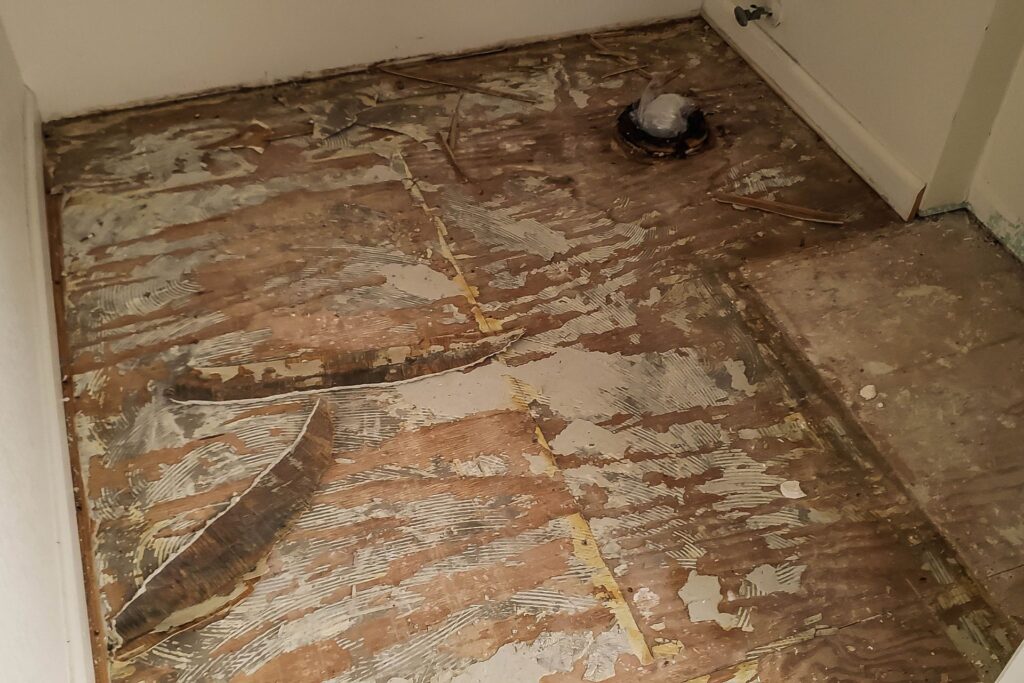
Popular Flooring Options And Their Costs In NZ
When selecting flooring for your home, especially in moisture-prone areas like bathrooms, it’s essential to understand both the material options available and the associated costs in New Zealand. Let’s explore some of the most popular flooring choices, along with their price points, benefits, and potential downsides to help you make an informed decision.
Tiles (Ceramic, Porcelain, and Natural Stone)
Tiles are a classic choice for bathrooms and other areas that need water resistance and easy cleaning. They offer versatility and come in a range of materials such as ceramic, porcelain, and natural stone, each with its own price range and characteristics.
- Cost Overview: The price of tiles varies significantly depending on the material. Ceramic tiles in NZ generally range from $30 to $90 per square meter, while porcelain tiles cost between $50 and $150 per square meter. Natural stone tiles, such as marble or slate, are more expensive, ranging from $100 to $250 per square meter. Labor costs for installation usually start at $45 per square meter but can go higher depending on the complexity of the job and the location.
- Pros and Cons: Tiles are highly durable, especially porcelain and natural stone options. They offer excellent water resistance and come in many styles, making them aesthetically appealing. However, tiles can feel cold underfoot, and natural stone requires regular sealing to maintain its appearance and prevent stains.
Vinyl Flooring
Vinyl flooring has gained popularity due to its affordability and resilience in wet areas. It’s available in sheet form, planks, or tiles and can mimic the appearance of more expensive materials.
- Cost Overview: Vinyl flooring is one of the most budget-friendly options available in NZ. Prices typically range from $25 to $80 per square meter. Labor costs for installation are usually lower than for tiles, averaging around $30 to $50 per square meter.
- Pros and Cons: Vinyl is waterproof and easy to maintain, making it a practical choice for bathrooms. It’s also softer underfoot compared to tile. However, vinyl may not have the same longevity as tile or stone, and cheaper options can wear out more quickly, especially in high-traffic areas.
Laminate Flooring
Laminate flooring can be a great middle-ground option for homeowners looking for the appearance of wood without the cost or maintenance concerns. It’s constructed from layers of synthetic materials that are fused together, with a photographic layer that mimics natural wood.
- Cost Overview: Laminate flooring in NZ typically ranges from $40 to $100 per square meter. Labor costs for installation are generally around $35 to $55 per square meter. Some higher-end laminates are specifically designed to be water-resistant, making them suitable for bathrooms.
- Pros and Cons: Laminate flooring is easy to clean and can be installed over existing floors. While it offers water-resistant options, it’s not as durable as tile or stone and may need to be replaced sooner, particularly in areas with frequent moisture exposure.
Engineered Wood
Engineered wood combines the luxury and warmth of real wood with better moisture resistance than traditional hardwood flooring. It is composed of a top layer of real wood with several layers of plywood beneath.
- Cost Overview: Engineered wood is a premium option, with prices typically ranging from $80 to $200 per square meter in NZ. Labor costs for installation can range from $50 to $100 per square meter due to the care required in fitting and finishing the wood.
- Pros and Cons: This flooring type adds a luxurious feel and warmth to any space. However, it requires careful maintenance to avoid water damage, particularly in bathrooms. While engineered wood offers better water resistance than solid wood, it’s still more vulnerable to moisture than tile or vinyl.
Stone Flooring
Natural stone flooring, such as marble, slate, or travertine, is the ultimate choice for those seeking a premium look and feel. It exudes luxury and provides unmatched durability.
- Cost Overview: Stone flooring is one of the most expensive options on the market, with prices ranging from $120 to $300 per square meter depending on the type of stone. Installation labor is also costly, starting at around $70 per square meter and increasing with the complexity of the stone cutting and fitting process.
- Pros and Cons: Stone flooring offers unmatched durability and a premium aesthetic that adds significant value to your home. However, it requires more maintenance, such as regular sealing, to prevent staining. Additionally, it can be cold underfoot, which might not be ideal for every homeowner.
Selecting the right flooring for your bathroom or any other area in your home requires balancing cost, appearance, and functionality. While tiles offer durability and water resistance, they can be cold and expensive. Vinyl is a cost-effective choice but may not last as long, while laminate provides a wood-like appearance at a fraction of the cost but can be less durable in wet areas. Engineered wood and stone bring warmth and luxury but require more investment and upkeep. Carefully consider your budget, aesthetic preferences, and how much maintenance you’re willing to do before making your choice.
By understanding the pros, cons, and costs of these flooring options, you can confidently choose the best material for your needs, ensuring that your flooring choice not only fits your style but also stands the test of time in your New Zealand home.
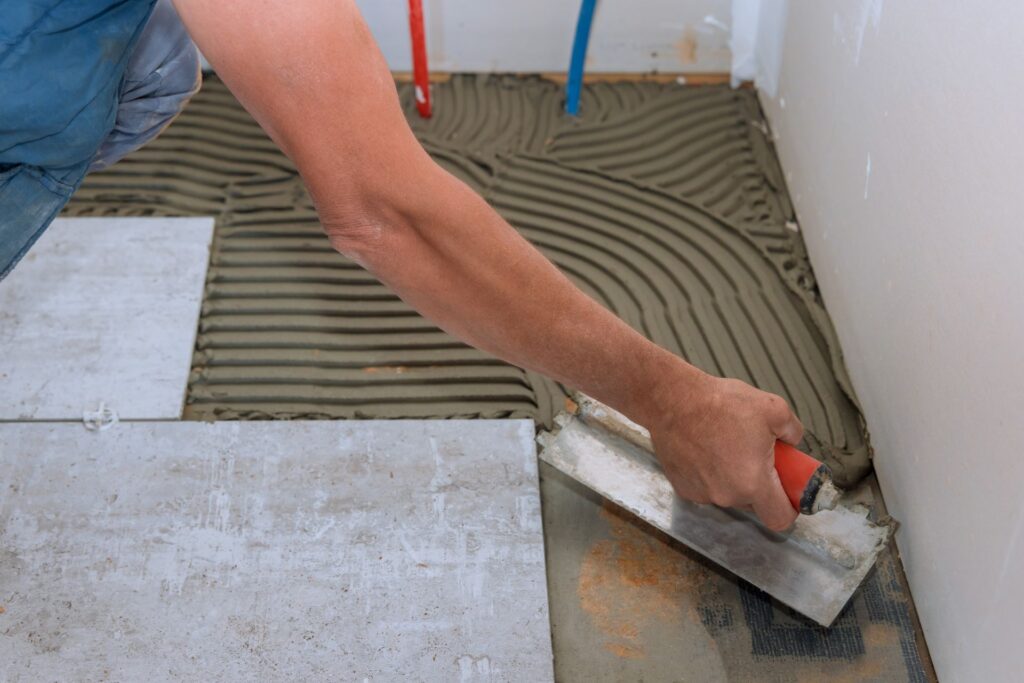
Labor Costs For Bathroom Flooring Replacement In NZ
Labor costs for bathroom flooring replacement in New Zealand can be a significant portion of the overall expense, but they are crucial to ensure the job is done correctly. This section breaks down the key aspects of labor rates, explains the value of hiring professionals, and examines the factors that can impact the final cost. Whether you’re contemplating a simple floor swap or a more intricate design, understanding labor costs is essential for accurate budgeting and long-term satisfaction with the results.
Overview of Labor Rates
Hourly and Daily Rates
Professional installers in New Zealand typically charge labor by the hour or day, with rates varying based on skill level, experience, and location. On average, hourly rates for a professional installer range between $40 to $80 per hour, depending on the region and the complexity of the work. For larger or more complex projects, some installers may offer daily rates, often between $300 and $600. These costs reflect not only the installer’s time but also their expertise in handling the specific materials and working efficiently to minimize disruption.
While these numbers provide a general overview, labor rates can vary significantly across the country. In urban centers like Auckland and Wellington, expect higher labor costs due to the increased demand and higher living expenses for tradespeople. In contrast, labor costs in more rural areas or smaller cities may be on the lower end of the spectrum.
Difference Between DIY and Professional Installation
Though attempting a DIY bathroom flooring installation might seem like a good way to cut costs, there are strong arguments in favor of hiring a professional. Installing bathroom flooring requires precision and experience, particularly when it comes to waterproofing—an essential component to avoid future issues such as water damage and mold. Professional installers ensure that the job is done correctly the first time, using the right materials and techniques for your specific floor type.
While DIY may save on initial labor costs, mistakes could lead to costly repairs down the line. In fact, professionals are often called in to fix DIY mishaps, which can end up being more expensive than hiring a professional from the outset. By investing in a skilled installer, you’re also investing in the long-term durability of your bathroom flooring, which can save money on maintenance and replacements in the future.
Factors Affecting Labor Costs
Location Variability
As mentioned, location plays a major role in determining labor costs for bathroom flooring replacement. In more populated and affluent areas like Auckland, Christchurch, and Wellington, labor costs can be significantly higher than in less urbanized areas such as Hawke’s Bay or Southland. This variance stems from the cost of living, demand for skilled labor, and accessibility of materials. In urban areas, the higher concentration of professionals might also mean more competitive pricing, but don’t be surprised if quotes lean towards the upper end of the range.
On the other hand, rural areas might have fewer installers available, which could either lower or raise labor costs depending on demand. It’s worth noting that installers in rural areas might charge extra for travel time if they are located far from your property, which can be another factor driving up costs.
Complexity of the Job
The complexity of the bathroom flooring installation is another critical factor that can affect labor costs. If you opt for a basic layout with straightforward materials like vinyl or ceramic tiles, labor costs will generally be lower. However, more intricate designs, such as herringbone or hexagonal tiles, require additional time and skill to install correctly, leading to higher labor charges. Additionally, removing old flooring, preparing the subfloor, or dealing with uneven surfaces can increase the amount of labor required, as installers must take extra care to ensure a smooth and stable finish.
Waterproofing, a crucial aspect of bathroom flooring, can also add to the labor cost, particularly if specialized materials or techniques are required. Installers might need to apply a waterproof membrane beneath the flooring or use specific adhesives and grouts to prevent water seepage. The more complicated and detailed the job, the longer it will take, and naturally, this will drive up the labor costs.
In conclusion, when replacing bathroom flooring in New Zealand, labor costs are shaped by a range of factors—from the type of professional you hire to the complexity of the installation and the region you’re in. Investing in a professional installer ensures quality workmanship that safeguards your bathroom against water damage and costly repairs in the future. Balancing the potential savings of DIY with the expertise of professional installation is key to ensuring your bathroom flooring stands the test of time, both in durability and appearance.

Cost Breakdown Of Replacing Bathroom Flooring In NZ
When you’re planning to replace bathroom flooring in New Zealand, it’s crucial to understand the full scope of costs involved. Here, we’ll break down the main components of the cost, from materials to labor, and any additional expenses that might arise.
Material Costs
Replacing bathroom flooring begins with selecting the right material, which greatly influences the overall cost. Here’s an overview of common options and their pricing:
- Vinyl Flooring: Vinyl is a popular, budget-friendly choice for bathrooms. On average, it costs between $30 and $60 per square meter, depending on the quality and design.
- Ceramic Tiles: Known for their durability and water resistance, ceramic tiles typically range from $40 to $100 per square meter. High-end designs may cost more.
- Laminate Flooring: Though not as water-resistant as tiles, laminate offers a stylish and affordable alternative, usually priced between $50 and $90 per square meter.
- Natural Stone: For those seeking a luxurious touch, natural stone options like marble or granite can cost $100 to $250 per square meter.
The type of flooring you choose will have a direct impact on both the aesthetic and the total cost, so it’s essential to pick a material that fits your budget and bathroom environment.
Labor Costs
Labor is another significant factor in the total cost of replacing bathroom flooring. In New Zealand, the cost of hiring a professional installer typically ranges from $40 to $80 per hour, depending on the complexity of the job and the region.
- Installation: Basic installation costs for most bathroom flooring materials generally range from $50 to $120 per square meter. This cost includes preparing the subfloor, laying the new flooring, and ensuring a proper fit.
- Disposal of Old Flooring: In addition to installation, you may need to account for the removal and disposal of your old flooring, which could add another $20 to $40 per square meter to your labor costs.
For larger bathrooms or more intricate designs, labor costs may rise. Be sure to get quotes from multiple contractors to ensure you’re getting a fair price.
Additional Costs
Replacing bathroom flooring often involves extra costs that aren’t immediately apparent but can add up quickly.
- Permits & Compliance: Depending on the scope of the renovation, you might need to obtain building permits, especially if you’re making structural changes. Permits can range from $100 to $500 depending on the local council requirements. Ensure that your project complies with the NZ Building Code to avoid fines or delays.
- Disposal Fees: Removing and disposing of old materials can incur additional charges. Some installers include this in their service, while others may charge separately, typically around $100 to $300 depending on the amount of waste.
- Material Delivery: If you’re ordering flooring from a supplier, don’t forget to account for delivery fees, which can range from $50 to $150 depending on your location and the size of the order.
- Emergency Repairs: If your bathroom flooring has been damaged due to water leakage or mold, you may face unexpected repair costs. Fixing these issues before installing new flooring can add $500 to $2,000 to your total, depending on the extent of the damage.
Replacing bathroom flooring in New Zealand involves more than just picking out materials. From labor to additional expenses like permits and disposal fees, it’s important to plan ahead and budget for the full cost. By understanding each aspect of the process, you can make informed decisions and avoid unpleasant surprises during your renovation.
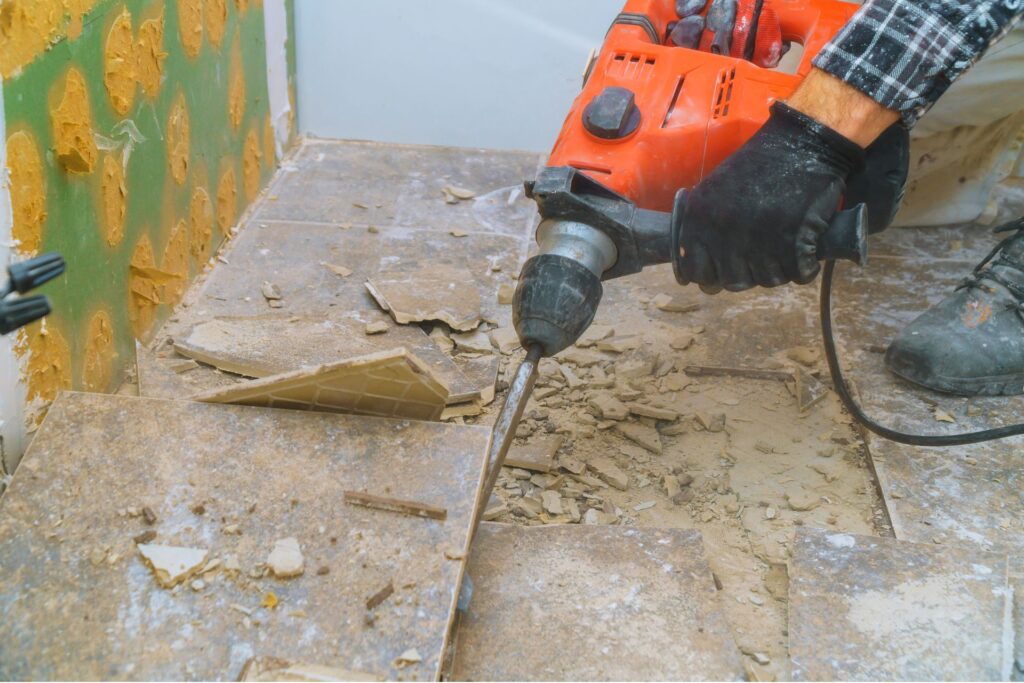
Comparing Flooring Costs Across Major NZ Cities
When you’re planning a bathroom renovation in New Zealand, it’s important to realize that the costs for flooring can vary significantly depending on the city or region you’re in. Let’s break down some of the key cost factors for flooring across major NZ cities to help you get a clearer picture of what you might expect.
Auckland
Auckland, New Zealand’s largest city, often comes with a premium price tag when it comes to bathroom flooring. This is largely due to higher labor costs driven by demand in a city that’s constantly growing. Skilled tradespeople in Auckland tend to charge more compared to other parts of the country, especially for more specialized flooring materials like tile or engineered wood. Additionally, because of Auckland’s size, accessibility to materials can be both an advantage and a disadvantage. While you have a greater variety of suppliers, the demand often leads to fluctuating material prices. The convenience of finding what you need locally can balance out these costs, but always be prepared for slightly higher overall pricing in Auckland compared to smaller regions.
Wellington
Wellington, the capital city, brings its own unique set of challenges that affect flooring costs. Known for its hilly terrain and sometimes unpredictable weather, labor in Wellington can be affected by the need for special equipment or additional safety measures during installation, particularly in older homes or properties with challenging access. Furthermore, the materials themselves might carry different price points due to supply routes and availability. Some flooring materials may need to be sourced from other regions, adding to the overall cost due to transportation. That said, the city’s size allows for some competitive pricing among contractors, so it’s always wise to compare quotes.
Christchurch
In Christchurch, the effects of the 2011 earthquake are still influencing construction and renovation projects. While much of the city has been rebuilt, there are still areas where post-earthquake building codes and considerations play a significant role in renovation costs. This is especially true for flooring, where structural integrity is paramount. The demand for certain types of materials, like reinforced tiles or flooring with specific resilience characteristics, can increase overall costs. Additionally, labor rates in Christchurch can be influenced by the ongoing need for skilled tradespeople with experience in post-earthquake rebuilding. Despite this, Christchurch remains one of the more affordable major cities for bathroom flooring compared to Auckland.
Rural Areas
In rural areas across New Zealand, the cost of bathroom flooring can often be higher than anticipated, not because of the materials themselves, but due to logistics. Delivery fees are usually the first major cost consideration, as suppliers may charge extra for shipping materials to more remote locations. Furthermore, tradespeople may add travel charges to their standard rates, as getting to and from the job site involves more time and fuel. On top of that, the availability of skilled labor in rural areas can be limited, so you might face higher rates or longer wait times to secure a professional. It’s worth considering the option of sourcing materials locally, if available, to mitigate some of these added costs.
By understanding these regional differences, you can better plan your budget for bathroom flooring. No matter where you are in New Zealand, getting a few detailed quotes from local contractors will help ensure that you’re paying a fair price for both materials and labor.

How To Get An Accurate Quote For Bathroom Flooring Replacement
When planning a bathroom flooring replacement, getting an accurate quote is crucial to avoid surprises down the line. This section will guide you through the essential steps to ensure your quotes are as precise as possible, helping you stay within budget while getting the quality you expect.
Steps to Take
Measuring Your Bathroom
Accurate measurements are the foundation of any reliable quote. Before contacting contractors, take the time to measure your bathroom carefully. Start by measuring the length and width of the floor area and then multiply those two numbers to get the total square meterage. Remember to include all the nooks and crannies, like areas around the toilet, vanity, or shower, as every inch counts in the final estimate.
Here’s a tip: use a laser measuring tool for the most precise results. Also, take note of any irregularities in the shape of your bathroom—contractors will need this information to calculate material wastage and cutting costs. Double-checking your measurements before handing them over will help you avoid unnecessary overages or underestimates in the final bill.
Requesting Multiple Quotes
One of the best ways to ensure you’re getting a fair price is by obtaining at least three quotes from reputable contractors. This allows you to compare not just the costs but also the scope of services each contractor offers. Don’t settle for the first quote you receive, as prices can vary significantly based on the contractor’s experience, reputation, and workload.
When reaching out for quotes, make sure the contractors understand you’re comparing them against others. This will encourage them to offer their most competitive rates and may also help clarify the breakdown of costs within the quote itself. Make sure you’re comparing like-for-like services—materials, labor, and any extras—so that you can make an informed decision.
What to Include in Your Quote Request
Specific Inclusions
When asking for a quote, it’s essential to be specific about what you expect the job to include. Make sure you specify the type of materials you’d like—whether it’s tile, vinyl, or hardwood—and ask for details on the cost of labor, waterproofing, and underlayment, if applicable. If you’re interested in additional features like in-floor heating, mention this upfront to avoid costly surprises later.
You should also confirm with the contractor whether they will be sourcing the materials or if you will. This clarity ensures that you’re not hit with unexpected supply costs once the job begins. The more detail you provide, the more accurate the quote will be, minimizing the risk of miscommunication or misaligned expectations.
Clarifying Hidden Costs
Hidden costs can easily blow your budget, so it’s critical to ensure that the quote includes everything you might need. Ask your contractor if the estimate covers subfloor repairs, which are sometimes necessary but not always included in the initial quote. Similarly, make sure to confirm whether disposal of the old flooring is part of the service or if you will need to handle that separately.
In some cases, there may be additional costs for moving furniture or fixtures to access the flooring area. Ensuring that these costs are outlined in the quote will help you avoid unexpected bills once work has begun. Always read the fine print and don’t hesitate to ask for clarification on any point that seems vague.
By taking the time to measure your bathroom accurately, requesting multiple quotes, and ensuring all specific inclusions and hidden costs are addressed upfront, you can secure a comprehensive and accurate estimate for your bathroom flooring replacement. This approach will save you time, stress, and money in the long run, while ensuring your renovation stays on track.
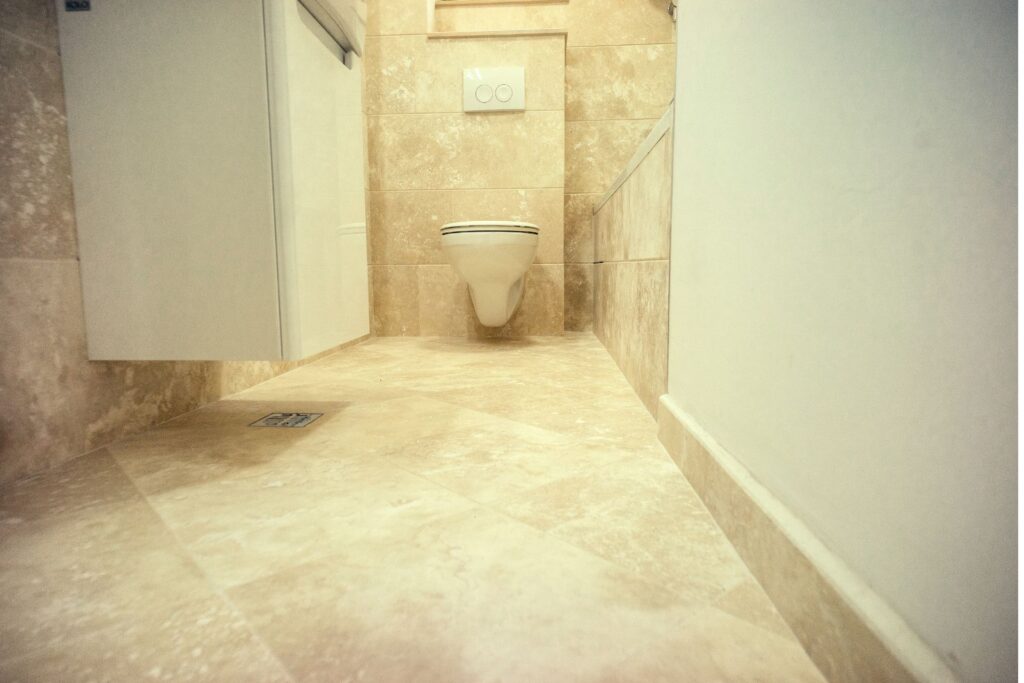
Cost-Saving Tips For Replacing Bathroom Flooring
When it comes to replacing bathroom flooring, it’s crucial to balance cost and quality. Here are some practical tips to help you save money while ensuring your bathroom floor is both durable and aesthetically pleasing.
Choosing Affordable Yet Durable Materials
When choosing bathroom flooring, you don’t need to sacrifice durability for affordability. The key is to find materials that offer the best balance between cost and longevity. Look for options like vinyl planks or tiles, which have improved significantly in recent years and can mimic the appearance of more expensive materials like hardwood or stone without the hefty price tag. Vinyl is water-resistant, easy to maintain, and can last for years if properly installed. Porcelain tiles are another budget-friendly choice; while they may cost more upfront, their longevity and resistance to moisture make them an excellent long-term investment. Don’t forget to compare different brands and check reviews to ensure you’re selecting a material that will stand the test of time.
DIY Options
One of the most effective ways to reduce the cost of replacing bathroom flooring is to tackle some of the labor yourself. DIY options like removing old flooring can save you a significant amount of money. Tasks like ripping up old tiles or laminate can be time-consuming but manageable for most homeowners, particularly if you’re dealing with a smaller bathroom space. However, when it comes to installing new flooring, especially in a moisture-prone area like a bathroom, caution is essential. DIY waterproofing or subfloor work can lead to long-term issues if not done correctly. Improper installation can cause water damage, mold, and structural problems that end up costing far more in repairs than you save upfront. If you’re not experienced with these types of installations, it’s best to hire a professional for this part of the job. A hybrid approach—handling the demolition and leaving the intricate installation work to professionals—can give you the best of both worlds.
Seasonal Discounts and Promotions
Another great way to save on bathroom flooring replacement is to time your purchase around seasonal sales and promotions. Major holidays like Black Friday, Boxing Day, and New Year sales often feature significant discounts on flooring materials, which can help reduce your total project cost. You can also look for clearance deals, particularly if you’re not fussy about specific colors or patterns. Keep an eye on local hardware stores or flooring suppliers, as they may have periodic promotions on overstocked or discontinued items. Signing up for newsletters or following suppliers on social media can also give you a heads-up on upcoming sales. Planning your renovation project around these deals can free up extra funds for other parts of the bathroom upgrade, like fixtures or vanity replacements.
By focusing on affordable, durable materials, strategically opting for DIY work, and timing your purchases to coincide with seasonal sales, you can significantly reduce the cost of replacing bathroom flooring without compromising on quality.
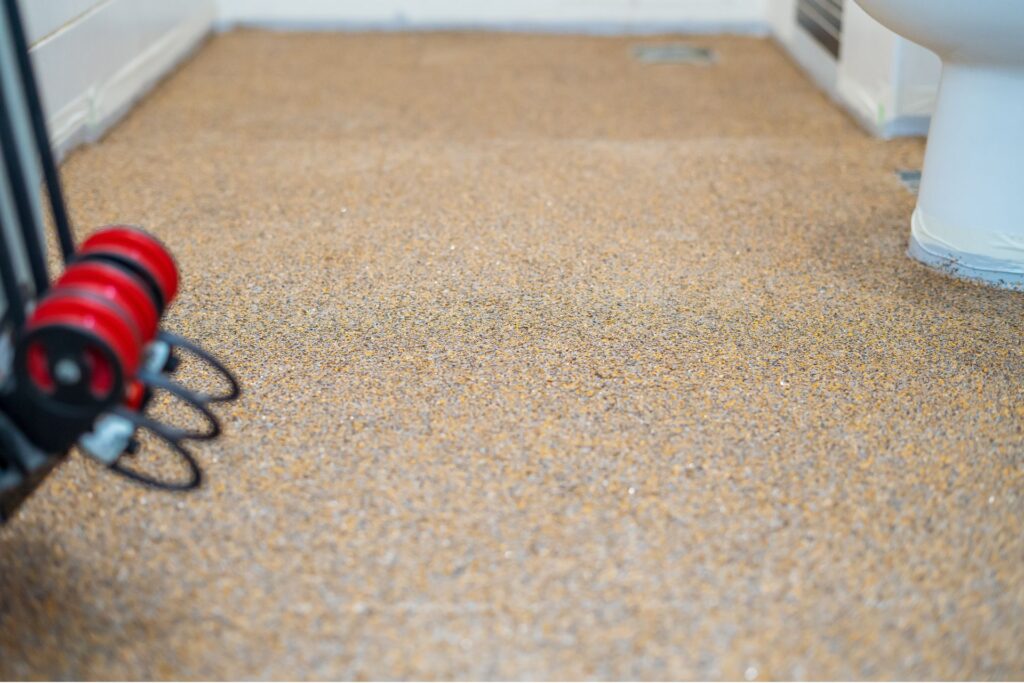
FAQs: About Cost To Replace Flooring In Bathroom NZ
What is the average cost to replace bathroom flooring in New Zealand?
On average, the cost to replace bathroom flooring in New Zealand ranges from $150 to $300 per square meter. This estimate includes both materials and labor for popular options like tiles or vinyl. The total cost can vary based on factors such as the size of your bathroom, material choice, and additional features like waterproofing or underfloor heating.
What types of materials are most commonly used for bathroom flooring in NZ?
The most commonly used materials for bathroom flooring in New Zealand include tiles (ceramic, porcelain, and natural stone), vinyl, laminate, and engineered wood. Each option varies in terms of cost, durability, and maintenance requirements, making it important to choose the best material based on your needs and budget.
How much does tile flooring cost in a bathroom in NZ?
Tile flooring for bathrooms in New Zealand typically costs between $50 and $150 per square meter, depending on the type of tile (ceramic, porcelain, or natural stone). Installation labor adds additional costs, ranging from $50 to $100 per square meter, depending on the complexity of the design.
Is vinyl flooring a good option for bathrooms?
Yes, vinyl flooring is a popular choice for bathrooms in New Zealand because it is affordable, waterproof, and easy to maintain. Vinyl typically costs between $40 and $100 per square meter, including installation. It’s also available in a wide variety of designs and can mimic the look of more expensive materials like tiles or wood.
Do I need to waterproof my bathroom floor during replacement?
Yes, waterproofing is an essential step when replacing bathroom flooring in New Zealand. Proper waterproofing helps prevent moisture damage and prolongs the life of your new floor. Waterproofing can add $15 to $50 per square meter to your total cost, depending on the extent of the work needed.
How long does it take to replace bathroom flooring?
The time it takes to replace bathroom flooring can vary based on the size of the bathroom, the material used, and the complexity of the installation. On average, it can take between 2 to 5 days to complete the entire process, including removal of the old flooring, subfloor preparation, and installation of the new flooring.
Can I save money by removing the old flooring myself?
Yes, you can save money by removing the old flooring yourself, which could reduce labor costs. However, this task can be time-consuming and may involve dealing with issues such as moisture damage or adhesive removal. If you’re comfortable with DIY work, this can be a cost-effective option, but it’s important to ensure the subfloor is properly prepared for the new flooring.
How much does it cost to install underfloor heating in a bathroom in NZ?
Underfloor heating typically adds $100 to $150 per square meter to the total cost of your bathroom flooring replacement in New Zealand. While this can be a more expensive option, underfloor heating provides additional comfort and energy efficiency, especially during colder months.
Do bathroom flooring costs vary across New Zealand?
Yes, the cost to replace bathroom flooring can vary depending on your location in New Zealand. Major cities like Auckland, Wellington, and Christchurch tend to have higher labor costs compared to rural areas. Material availability and delivery charges may also differ based on your location.
What are the hidden costs to consider when replacing bathroom flooring?
Hidden costs can include subfloor repairs due to moisture damage, permits and compliance fees, disposal of old flooring, and additional features such as underfloor heating or specialized waterproofing. It’s important to discuss these potential costs with your contractor to avoid unexpected expenses during the project.
Conclusion
In conclusion, replacing bathroom flooring in New Zealand involves several factors that impact the overall cost, from the choice of materials to labor rates and regional variations across the country. It’s crucial to plan ahead by budgeting not only for the expected expenses but also for any potential surprises that may arise during the renovation process. Being prepared financially can help avoid stress and delays. If you’re unsure where to start or need further guidance, don’t hesitate to contact experienced professionals who can provide accurate quotes, expert advice, and support tailored to your bathroom flooring project.
About the Author:
Mike Veail is a recognized digital marketing expert with over 6 years of experience in helping tradespeople and small businesses thrive online. A former quantity surveyor, Mike combines deep industry knowledge with hands-on expertise in SEO and Google Ads. His marketing strategies are tailored to the specific needs of the trades sector, helping businesses increase visibility and generate more leads through proven, ethical methods.
Mike has successfully partnered with numerous companies, establishing a track record of delivering measurable results. His work has been featured across various platforms that showcase his expertise in lead generation and online marketing for the trades sector.
Learn more about Mike's experience and services at https://theleadguy.online or follow him on social media:


